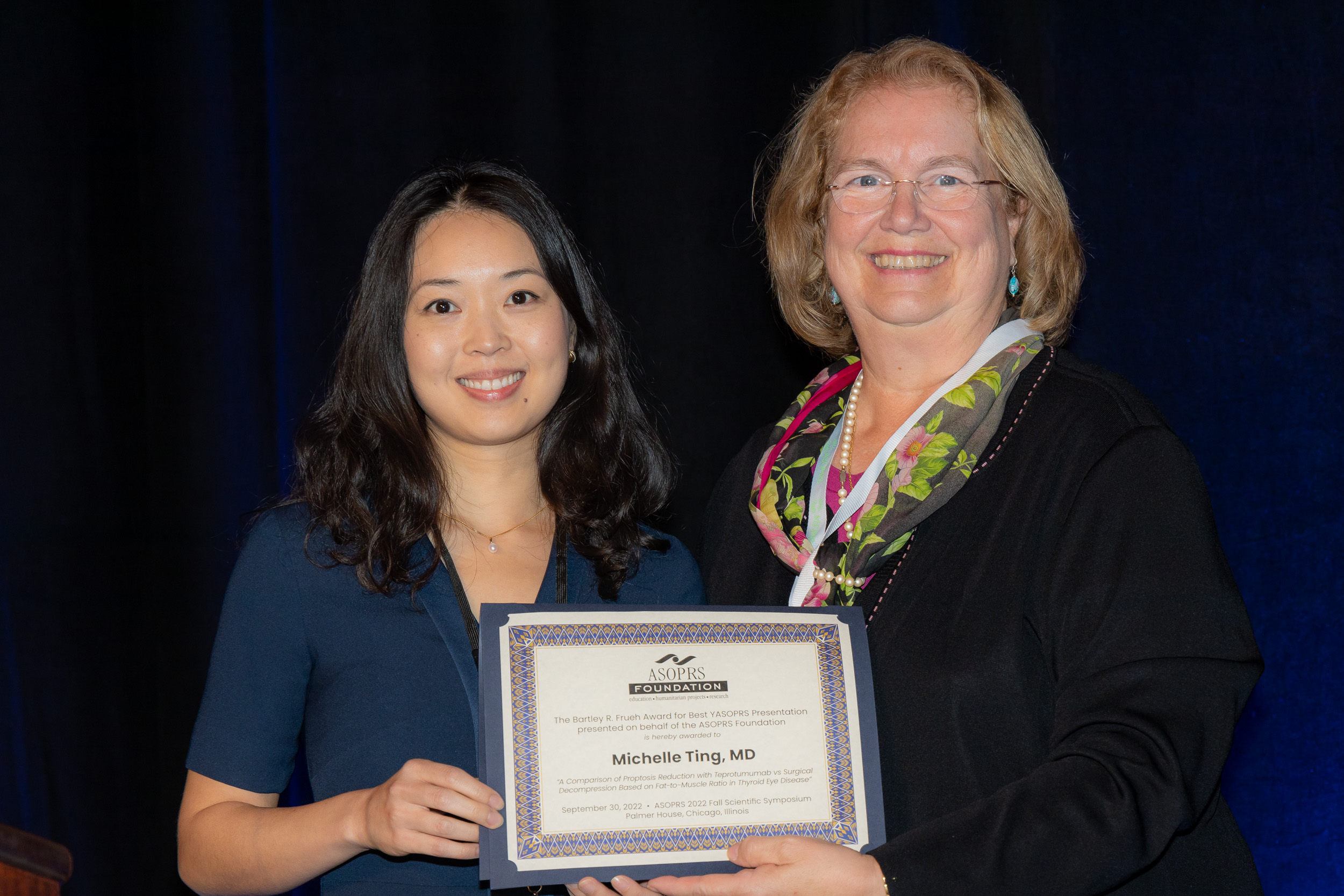Michelle Tang, MD

Dr. Michelle Ting graduated this year from the international ASOPRS fellowship at UCSD. While at UCSD, she was under the excellent tutelage and mentorship of Dr. Don Kikkawa, Dr. Bobby Korn, and Dr. Catherine Liu. Before her fellowship, she trained in the United Kingdom; she attended college and medical school at Cambridge University and Imperial College London, then undertook her residency at Moorfields Eye Hospital, including a year as Chief Resident. Now she enjoys working as an attending oculoplastic surgeon at the Royal Free Hospital in London, applying the skills and techniques she learned during fellowship and sharing ideas from across the pond with her residents and fellow.
“This year at the ASOPRS Fall Symposium, I was given the opportunity to present an exciting study that we conducted during my ASOPRS fellowship, “A comparison of proptosis reduction with teprotumumab versus surgical decompression based on the fat-to-muscle ratio in thyroid eye disease.” We chose to investigate this because teprotumumab is a new tool in our armamentarium of treatments for thyroid eye disease, but we had little idea of how it compared to the traditional treatment for proptosis, namely surgical decompression. Our idea was sparked by the clinical observation that not all patients were experiencing the same degree of response to teprotumumab, with some still going on to need surgical decompression but others responding very well to a course of the medicine alone. The idea for our study was also influenced by the findings of our previous work (for which we were also lucky to win the Bartley Frueh award in 2021!), “Differential effects of teprotumumab treatment based on the fat-to-muscle ratio in patients with thyroid eye disease” (Orbit 2002 Sep 12;1-8). We showed that the orbital fat-to-muscle ratio (FMR) in thyroid eye disease correlates with proptosis reduction in response to teprotumumab. Based on this, we wanted to explore whether FMR could be used to identify if surgical decompression or teprotumumab might lead to a greater reduction in proptosis. We looked at patients who had completed a course of teprotumumab and compared their level of proptosis reduction with patients who had undergone surgical decompression alone. We then stratified the patients into two groups, those with high FMR and those with low FMR, and found an interesting difference between the two. Patients with low FMR had similar levels of proptosis reduction with teprotumumab as compared to surgical decompression, but in patients with high FMR, orbital decompression was associated with a greater level of reduction in proptosis than teprotumumab. We concluded that FMR is a useful tool in predicting whether a patient will respond better to teprotumumab or surgery and that surgical decompression should still be considered as first-line treatment for patients with a high FMR. We hope our study helps to inform clinicians about how to counsel patients on the choice between teprotumumab and surgical decompression and to build a picture of where teprotumumab falls in the framework of treatments for thyroid eye disease.”

